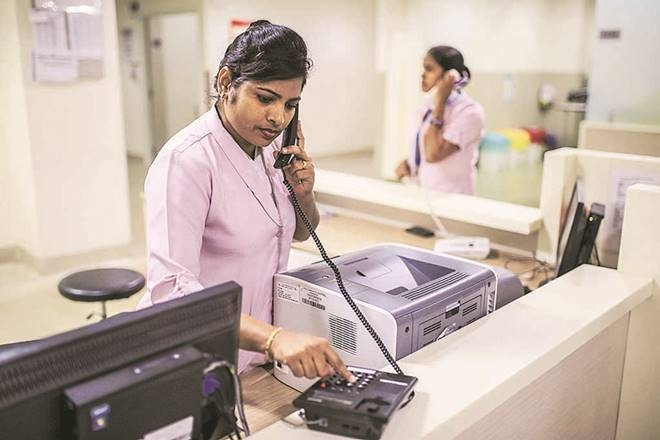By Lalit Dash
Srishti, a 35-year-old HR professional, recently started experiencing palpitations and shortness of breath. While looking up on the Internet for information on the probable causes of her condition, she found an online health services platform where she could review portfolios of doctors and treatment options – allowing her to ‘shop’ for the best care provider and a treatment plan at a cost she could afford. Booking and paying for the appointment through the hospital’s web interface made it easy for her to schedule the visit as per her convenience.
Post consultation she explored online pharmacies and got her medicine at the best rate, earning some loyalty points in the process. Srishti’s situation could be ours. With the onset of digital transformation, the healthcare sector is witnessing a major overhaul. Today, an individual is not just a prospective patient, but a customer armed with a ‘shopping list’ to select the best doctors, facilities and treatment at an affordable cost and at a time and location of her choice. The flow of information is no longer unidirectional (caregiver to care receiver) but bidirectional and consumer choices are made within and outside the clinical environment. This has led to the healthcare system to leapfrog from a legacy ‘PDS (Public Distribution System) model’ to a ‘supermarket model’.
With an increased focus on the quality of consumer experience, healthcare companies are deploying technologies to make care delivery more accessible and personalised. Medical diagnostics, Internet of Medical Things (IoMT), Blockchain, Artificial Intelligence (AI) and data analytics are triggering disruptive innovations that are, in turn, redefining care paradigms.
Technology is the pivotal pillar
Technology, as is evident, is a crucial cog in the evolution of consumerism in healthcare. Innovations in cloud computing, mobility solutions, telemedicine, and quantum computing are making their way into mainstream health operations. For instance, AI and ML are pushing this change through algorithms built for diagnostics of chronic diseases. Augmented reality/virtual reality (AR/VR)-led technology is already being put to use to set up virtual care systems that enable doctors to conduct surgeries in remote areas or during times of a public health emergency.
Natural Language Processing (NLP) technology— a form of AI that enables computer programs to process and analyse unstructured data from different sources – is extensively being used in technical documentation, leading to a faster diagnosis. Additionally, the gamification of healthcare particularly in-patient wellness is enhancing the customer (vs. patient) mindset and reciprocal engagement. Take for instance, mobile apps that run a rewards program for people who accomplish a health-related task every day or those that encourage participation of friends and family in fitness contests.
What does the future hold?
With the care providers’ focus shifting more towards value across customer lifecycle, there will be stronger collaboration between healthcare providers and customers for pre-, during- and post-care medical services. As healthcare consumerism continues to grow, healthcare providers will have to learn to adapt to this changing environment to guide and engage consumer as well as secure their loyalty. This will eventually lead to ease in access to care, reduced cost of care and enhanced quality of care benefitting many consumers such as Srishti.
The writer is senior director – Technology, Optum Global Solutions








